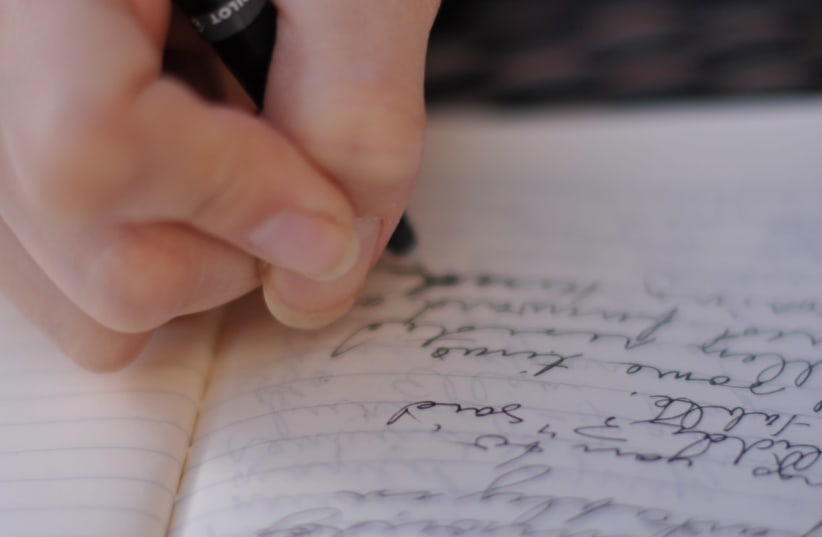Plague or no plague, spring is approaching with the Earth’s annual season of renewed life, which is why I’m celebrating this spring especially. It is the first anniversary of the kidney transplant I was privileged to receive on March 24, 2020, the beginning of my year of quarantine.
After the first 10 months and my second vaccination, I could kiss and hug my 11 grandchildren for the first time. After the eleventh month, I can go swimming. This is an extremely important quality of life event, because, after 11 months of taking steroids and being forbidden to exert myself, I now have 10 excess kilos to work and diet off.
This new life has begun very productively. I continued working from my bed in the transplant ward at Hadassah-University Medical Center in Ein Kerem, just three days after surgery. I was weak, but I could use my laptop, taking back control as editor of jerusalemworldnews.com from my social media editor. I also had two other part-time job commitments with deadlines, so I was busy, and hardly had time to follow the plague on TV.
The work continued in a more comfortable environment from home, lying in bed for the next three months, slowly building strength until I was able to sit up at my desk. This was fortunate, because I was in the final editing stages of my debut novel, while simultaneously publishing a book review that required two interviews with the author, and working on the translation and editing of another book, an autobiography – with the deadline being the author’s 90th birthday.
I published my novel in July and finished the manuscript in time for his birthday.
So, I think I can rightfully claim to be the only American Israeli journalist who has both undergone a kidney transplant, published a novel, and finished translating and editing another book since the plague began. Just sayin’.
This yin and yang thing between escaping death by the miracle of a kidney transplant – and just on the fourth day of spring – is something I’ve only begun to comprehend. It was a long journey to arrive at this point: to be able to celebrate my first birthday with my new used kidney only two months before my 72nd birthday. And the journey goes on. There’s the sequel to write, and perhaps a screenplay.
But I’ll never forget what it was like to have an organ transplant in the middle of a pandemic, or what I had to do to prepare for surgery on some unknown day in the future, at the end of a marathon known as the search for a donor. This takes years and I’ve written about it before, but the high points can be summarized briefly.
Life is normal until the diagnosis, then it changes, starting with an unbelievably strict diet (no bananas or avocado for two years!) and losing some 50 pounds, going from 96 to 74 kg. (what I weighed my junior year). This stabilized during a year of dialysis at 81 kilos, my weight when I went into surgery. Now, after a year of taking steroids every day and being forbidden to exert myself until month No. 10, I have begun to swim daily laps again. I used to swim to Tel Aviv and back every year -- in kilometers swum. This year I’m looking forward to making it from Ramat Rachel to Arnona and back.
As a former health reporter at The Jerusalem Post, I kept a record of some statistics: 131 dialysis sessions at two large-bore needles per session = 262 holes in my left arm. This is after surgery to insert a fistula in my left arm: attaching an artery to a vein to enable the bloodstream to handle the pressure required to recirculate seven liters of blood through a machine that filters it and pumps it back into your body. It takes four hours.
All through the months of dialysis at Misgav Ladach, I was attended to by an outstanding, friendly, and caring staff. I was pleased that the unit is headed by an Arab-Israeli and the staff encouraged me to practice my high school Russian and inadequate Arabic.
One significant change in quality of life is that I’ve enrolled in an Arabic class, for the second time in years, inspired by the need to converse with 20 percent of the population in a richer vocabulary than my army Arabic, which was limited in range from how to say “open your bag” to “halt or I shoot.”
This became increasingly important as time went on, since both the surgeon who inserted my fistula and the surgeon who transplanted my kidney are Arab-Israelis, and since I still see them from time to time, I want to be able to converse in their language. The same goes for my many Arab nurses, male and female, and even just to chat with the wonderful cleaning workers who made me feel at home – which is kinda what Hadassah has become.
Another transplant fun fact: Since last March, I’ve been back to the transplant ward 96 times for blood tests and checkups. This would have cost NIS 1,920 in parking fees if I didn’t have a handicapped sticker – but is still a lotta gas. Well worth the trip.
The writer is a former chief copy editor and editorial writer at ‘The Jerusalem Post.’ His novel, ‘The Flying Blue Meanies,’ is available on Amazon.
